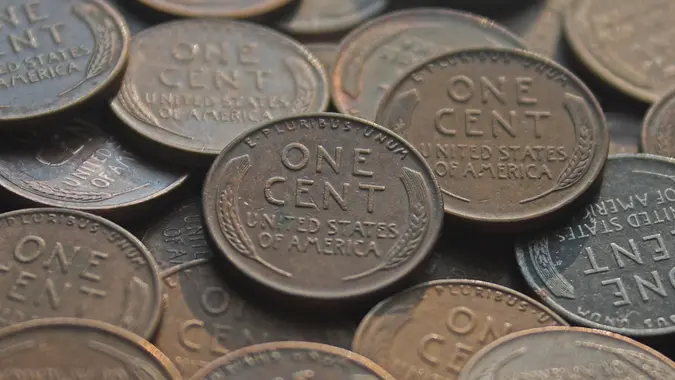4 Ways To Stop Saving Money and Start Building Wealth

Commitment to Our Readers
GOBankingRates' editorial team is committed to bringing you unbiased reviews and information. We use data-driven methodologies to evaluate financial products and services - our reviews and ratings are not influenced by advertisers. You can read more about our editorial guidelines and our products and services review methodology.

20 Years
Helping You Live Richer

Reviewed
by Experts

Trusted by
Millions of Readers
Budgeting and pinching pennies could save you more each month, but it won’t necessarily help you build real wealth. If you want to exponentially grow your money, parking your life savings in a traditional savings account that earns less than a 1% annual percentage yield most likely won’t get you there, especially with today’s inflation and rising living costs.
Here are four ways to stop letting your cash sit idle and start putting it to work so you can achieve financial freedom.
1. Move Some Cash to Investments
Though investing does come with some risks, that’s where wealth building happens. And while you’ll want to keep some funds in checking and savings for regular expenses and emergencies, investing a portion of your money is a good way to build wealth.
If you’re worried about volatility, start with a simple index fund or exchange-traded fund (ETF). These funds follow big market indexes like the S&P 500 and have a long track record of beating plain savings accounts over time. And because they’re diversified, investing in an index fund or ETF is lower risk than owning a few individual stocks.
You can also diversify beyond stocks. Real estate can be another wealth builder, and you don’t need to be a landlord to get started. Real estate investment trusts (REITs) let you buy shares of commercial properties directly from a brokerage account. They pay dividends and tend to move differently from stocks, which can help smooth out market swings.
2. Use Tax-Advantaged Accounts
Tax-advantaged accounts offer tax exemptions or deferrals on investments, which can help you optimize your savings and minimize tax burdens.
Employer-sponsored 401(k)s are a good starting point, especially if your company offers a match, which is basically free money. There are two types of 401(k) plans: traditional and Roth. With a traditional 401(k), your contributions are pretax, which means they reduce your taxable income. That said, your withdrawals in retirement are taxed. With a Roth 401(k), your contributions are made with after-tax income and your withdrawals are tax-free in retirement.
Individual retirement accounts (IRAs) are also worth looking into. A traditional IRA lets you deduct contributions now, and a Roth IRA lets your money grow tax-free and withdraw earnings tax-free in retirement.
Health savings accounts (HSAs) are another popular tax-advantaged account. If you qualify, it can triple as a medical fund, retirement account and tax shelter.
3. Invest In Yourself and Your Earning Potential
It’s much harder to build wealth on a low income than on a high income. So if you want to speed up wealth creation, focus on increasing your income to widen the gap between what you earn and what you spend.
If you’re not where you want to be in terms of your career, consider investing in courses, certifications or skills that make you more valuable in the job market. You could also start a side hustle or business that can supplement or eventually replace your full-time job.
4. Rethink Your Emergency Fund
Building wealth doesn’t mean emptying your savings account completely and putting all your money into the stock market. You still need an emergency fund (typically three to six months’ worth of essential expenses) to handle unexpected costs.
That said, it’s also not a good idea to keep more cash than you realistically need in your emergency savings account. If you have more than a year’s worth of expenses sitting in a 0.5% savings account, you might be better off moving part of that money into a high-yield savings account for short-term needs and investing the rest for growth.
Make Your Money Work for You
Saving is the first step toward financial security, but it shouldn’t be your only focus. Once you’ve built a solid emergency fund and savings account, it’s time to let your extra cash do more than just sit there. Consider moving a portion of your money into the stock market or retirement accounts, or think about investing in your own skills or business ideas.
A savings account keeps your money safe, which is important. But if you want to build real wealth, you need to put at least some of that money to work.
 Written by
Written by  Edited by
Edited by 

























